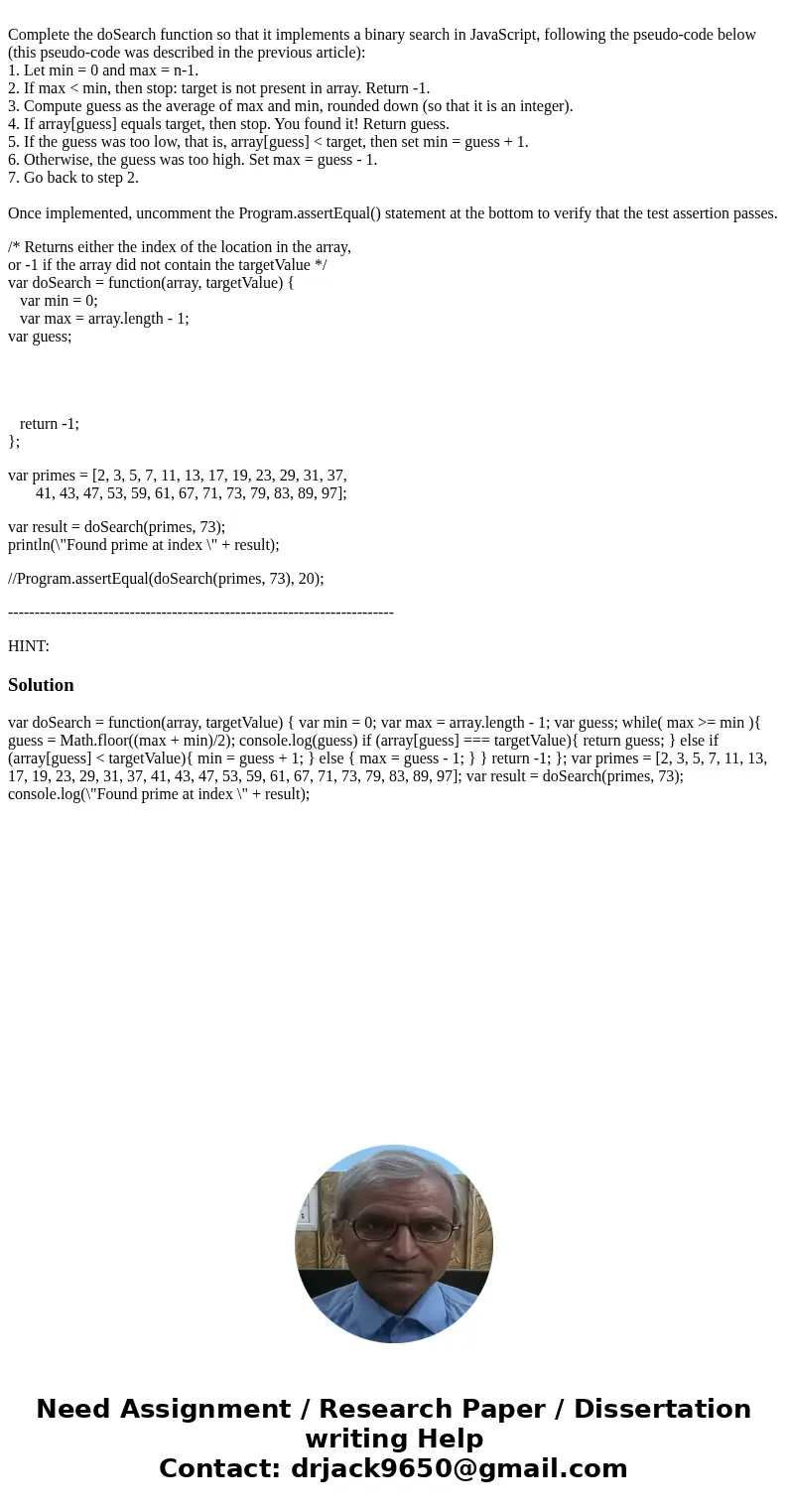Complete the doSearch function so that it implements a binar
Complete the doSearch function so that it implements a binary search in JavaScript, following the pseudo-code below (this pseudo-code was described in the previous article):
1. Let min = 0 and max = n-1.
2. If max < min, then stop: target is not present in array. Return -1.
3. Compute guess as the average of max and min, rounded down (so that it is an integer).
4. If array[guess] equals target, then stop. You found it! Return guess.
5. If the guess was too low, that is, array[guess] < target, then set min = guess + 1.
6. Otherwise, the guess was too high. Set max = guess - 1.
7. Go back to step 2.
Once implemented, uncomment the Program.assertEqual() statement at the bottom to verify that the test assertion passes.
/* Returns either the index of the location in the array,
or -1 if the array did not contain the targetValue */
var doSearch = function(array, targetValue) {
var min = 0;
var max = array.length - 1;
var guess;
return -1;
};
var primes = [2, 3, 5, 7, 11, 13, 17, 19, 23, 29, 31, 37,
41, 43, 47, 53, 59, 61, 67, 71, 73, 79, 83, 89, 97];
var result = doSearch(primes, 73);
println(\"Found prime at index \" + result);
//Program.assertEqual(doSearch(primes, 73), 20);
-------------------------------------------------------------------------
HINT:
Solution
var doSearch = function(array, targetValue) { var min = 0; var max = array.length - 1; var guess; while( max >= min ){ guess = Math.floor((max + min)/2); console.log(guess) if (array[guess] === targetValue){ return guess; } else if (array[guess] < targetValue){ min = guess + 1; } else { max = guess - 1; } } return -1; }; var primes = [2, 3, 5, 7, 11, 13, 17, 19, 23, 29, 31, 37, 41, 43, 47, 53, 59, 61, 67, 71, 73, 79, 83, 89, 97]; var result = doSearch(primes, 73); console.log(\"Found prime at index \" + result);
 Homework Sourse
Homework Sourse